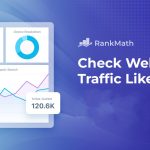Whether it’s your teenage neighbor trying to go viral on TikTok or an 86-year-old looking for long-lost friends on Facebook, everyone is using social media.
The key is knowing what metrics matter and how to monitor them. Avoid getting caught up in vanity metrics that don’t drive your business forward.
1. Traffic
Website traffic is a key metric that illustrates the impact of your social media efforts. Traffic metrics include total visits, unique visitors, page views and bounce rate.
Unique visitors are the number of distinct individuals who visit your website in a given timeframe, and they can help you understand how your audience is growing. If your unique visitor count is increasing, this indicates that you are reaching new people and engaging them with your content. If it’s decreasing, this could signal a need to change your marketing strategy or the quality of your content.
Another important metric is your top social referrals, which show the sites that are sending traffic to your website. You can find this information in Google Analytics under the Source/Medium report, which is broken down by network and ad type. A free tool like SiteChecker can also give you this information and more, including a breakdown of your pageviews, unique visitors and more by country.
2. Engagement
To keep visitors engaged with your website, you must give them the content they want and need. That means writing informative blog posts, connecting on social media and offering helpful resources. Keeping users on your site will encourage them to return and share your content with others.
To measure engagement, you can look at page views and unique visitors. While pages viewed is the total number of clicks, unique visitors gives you a more accurate picture of how many people are actually visiting your site.
Another important metric to consider is the ratio of new versus returning visitors. This metric tells you whether your current audience is finding value in your website, or if you need to make changes to attract more users. A high ratio of returning users is a sign that your website is providing what your audience wants and needs. This metric is also a good indication of how “sticky” your content is.
3. Conversions
When your goal is to generate online sales, social media conversion metrics are the key performance indicators you need to track. With the right tools and metrics, you can make data-driven decisions to optimize your social media for ecommerce strategy.
The number of visitors who convert, like making a purchase or signing up for an email newsletter, from your social media page, post or ad is a straightforward metric that can be calculated by multiplying the total number of social media clicks with your desired metric (like visits, subscribers or contacts).
With this and other metrics, you can assess your ROI on social ads and content. A regular reporting cadence, like monthly for health checks and weekly for experiments and quick changes, can help you stay on track with your social media goals. Using analytics and reporting tools, such as those found in Sprout, can streamline the process of collecting and sharing this data with stakeholders.
4. ROI
Ultimately, ROI helps you see how well your website’s performance is converting traffic into customers and business growth. You can evaluate your ROI by tracking key metrics, analyzing data, and optimizing your website.
Having an understanding of your social media ROI isn’t just a nice to have—it’s critical to the success of your social team and wider business. The ability to clearly illustrate your impact is one of the biggest challenges for social media teams, according to The 2023 State of Social Media Report.
Measuring ROI can be done by looking at web conversions, such as those from visitors clicking through to your site, reading articles, or making a purchase. You can also use Google Analytics to directly connect your social media ad campaigns to sales by measuring direct-from-social purchases, which is helpful for justifying additional advertising spend and understanding which ads are performing best. For example, XYZ Company increased their ROI by improving the design of their product pages and checkout process, implementing email marketing strategies for new and returning customers, and conducting A/B testing to improve call-to-action placements on their website.






